Today was to be a more relaxed day, half as much driving as yesterday and a chance to take in more of the surrounding landscapes as we continued west across Nebraska.
This was this first time in the Prairies for all three of us (Ginnie and Me and a Dog Named Hopi), and although we are told that we shouldn’t judge Nebraska by the vistas from Interstate 80, it is mostly a flat and characterless canvas that is at the same time quite fascinating.
Pulling off I80 and onto a regular highway, the speed limit, which is a generous 75 on the Interstate, went down to 60. Although this road was only two lanes, there was not another car in sight, and Ginnie and I were reveling in this fact, when out of nowhere, red flashing lights appeared in my rear view mirror. I pulled over and a very nice policeman asked if I knew the speed limit. For a split second I considered feigning ignorance but fessed up that I knew it was 60. He had clocked me at 78 but wrote me a ticket for only 75 to keep me below the next fine threshold! He wished us a safe and happy continuation to our journey and we motored on, ensuring to slow to the requisite 35 MPH going through each little town en route!
We crossed into the Mountain Time Zone and instantly gained an hour, which meant we arrived at the Sage Hill Vineyard and Winery a little after 3:00pm. Locating the winery was not without some drama. The address is Parks, Nebraska and GPS Woman brought us there without further incident. However the town of Parks is something to behold. Main Street, which houses the Post Office, is actually a dirt road. If 25 people live here I’d be surprised. The Community Building has even less paint on it than our house, and the few residents appear to live in ramshackle trailers with myriad abandoned cars and trucks in their yards.
We wondered what kind of place this winery, where we would be staying the night, would be like. A sign in the town pointed to the winery so we steeled ourselves and headed off in search of adventure and blog fodder.
The scenery began to change to something quite amazing. Rolling hills, covered in sagebrush, remote and almost surreal in places spread before us, as we climbed until we saw a sign directing us into the winery. We crossed a cattle grid and drove the winding dirt road down and then back up to the winery. As we grew closer we were astonished. What a find!
Hopi bounded out as if unshackled from years of solitary confinement and we headed into the winery to be greeted by owner, Carol Walker. Her ebullient personality instantly made us feel at home and Hopi was encouraged to go free and explore inside and out. He was in his element especially as he had the owners’ springer spaniel to play with too!
Carol called her husband, Hal, in to the tasting room. He was in the vineyard pruning but needed little encouragement to take a break and come to talk to us about his wines and his winemaking exploits.
Hal is a fish farmer by trade but in 2001 he started to experiment with fruit wines, blackcurrant, rhubarb etc. He enjoyed that experience, progressed to “kit wines” and then wanted to jump on the booming Nebraska wine business bandwagon and try making real wine from real grapes. The acquisition of the 16 acres that he now owns above Parks, Nebraska, came about because of a chance meeting with a friend in the local Wal-Mart. He said he was looking for land that would be suitable for grape growing and his friend (another Hal) eventually sold him the land. Water was going to be a problem and Hal knows a little bit about streams and creeks from his other life as a fish farmer. The creek that goes through the land would not produce sufficient water for the 2.5 acres of vines that he wanted to grow. So he dug for water and drilled a well. He found water 70 feet down but needed to pump it to the vineyard. The answer was a very green solution; Hal installed a pump that is powered by solar energy. Now he had land and water. He just needed vines.
Hal is a self-taught winemaker and would be the first to admit that he lacks skills and experience in many respects. He also has very basic equipment currently. He has applied for a grant to purchase two temperature-controlled jacket fermenters, which will help him enormously. Right now, he relies on a simple air conditioner to do what he can to control the fermentation. And he only has a mechanical press. No fancy (and expensive) bladder press for him – at least not yet.
What Hal lacks in experience and equipment, he makes up with boundless energy, enthusiasm and a genuine love for what he is doing. His wines, if we’re being brutally honest, are not that great yet, but they certainly have potential. His wines are all varietals (no blends) and the varieties are French hybrids. Vitis Vinifera have not found a place in his 2.5 acres of vineyards yet, but he is making a valiant effort with the varieties he does have and also makes wines with juice bought from other growers in Nebraska and Colorado. Of the wines we tasted, the Edelweiss was pretty good, although the juice was bought from eastern Nebraska where his friend grows the grapes and yields a very high 10 tons per acre!
Of Hal’s own grown grapes, we enjoyed the Traminette (a hybrid that is related to the Gewürztraminer grape that has actually been chosen as Indiana’s signature state wine) the most of his whites. The Cayuga was very funky and something weird was going on there. Hal knows there is a problem with that wine. It has elevated ethyl acetate (the smell you get from nail polish remover) and is throwing some crystals. Temperature instability was probably the cause. I didn’t care for the LaCrosse much either but others rave about the cidery style.
Of the reds, Hal makes Marechal Foch from bought-in juice that is OK. The Leon Millot is interesting and I swear it has a sage-like nose perhaps picked up from the sagebrush that inhabits the surrounding land. The best of the reds is what they describe as their Big Dog, the Chambourcin. This is a much bigger wine than the others and more extracted, although it still needs more color and brightness to be totally successful. Hal also makes an interesting Rhubarb wine that is colored with some Chambourcin and works as a dessert wine, and an even more interesting mead, a beverage (not really a wine) with ancient origins made from local honey.
The most expensive wine is only $16 per bottle (for the Chambourcin). We enjoyed a bottle of Traminette ($14.00) with dinner in the delightful loft above the winery. This is a gem of a find; spotlessly clean, with a full kitchen, bedroom, living room with dining area and nice bathroom – all for just $90 per night including a bottle of Hal’s wine. And doggies are welcome which was the original reason for staying here for us! The only negative – no cell phone service or Internet. While that is very liberating in many ways, it means that this blog will not get posted until tomorrow.
I would love to spend more time exploring the Nebraska Wine Trail. They are a very young industry but growing rapidly, producing ten times as much wine in 2009 as they did in 2000 when they started. Over 30 varieties are grown here and in 2009 they made 69,140 gallons of wine. Hal made about 1000. About two-dozen winegrowers make wine in over 50 counties in Nebraska and so the state really does have a Wine Country. Our hope during this trip, is to unearth some winemakers who are adding to the rich American wine culture in small but exciting ways. These wines are not Napa, or Bordeaux or Burgundy or Chianti. In most cases the winemakers are still “garagistes” making small quantities for the local market. But just as some states like New York and Virginia have excelled in recent years, people like Hal are to be congratulated for their pioneering spirit. Our lives are richer because of them and the Great American Wine Industry is alive and kicking all over the country. Go Hal!
This was this first time in the Prairies for all three of us (Ginnie and Me and a Dog Named Hopi), and although we are told that we shouldn’t judge Nebraska by the vistas from Interstate 80, it is mostly a flat and characterless canvas that is at the same time quite fascinating.
Pulling off I80 and onto a regular highway, the speed limit, which is a generous 75 on the Interstate, went down to 60. Although this road was only two lanes, there was not another car in sight, and Ginnie and I were reveling in this fact, when out of nowhere, red flashing lights appeared in my rear view mirror. I pulled over and a very nice policeman asked if I knew the speed limit. For a split second I considered feigning ignorance but fessed up that I knew it was 60. He had clocked me at 78 but wrote me a ticket for only 75 to keep me below the next fine threshold! He wished us a safe and happy continuation to our journey and we motored on, ensuring to slow to the requisite 35 MPH going through each little town en route!
We crossed into the Mountain Time Zone and instantly gained an hour, which meant we arrived at the Sage Hill Vineyard and Winery a little after 3:00pm. Locating the winery was not without some drama. The address is Parks, Nebraska and GPS Woman brought us there without further incident. However the town of Parks is something to behold. Main Street, which houses the Post Office, is actually a dirt road. If 25 people live here I’d be surprised. The Community Building has even less paint on it than our house, and the few residents appear to live in ramshackle trailers with myriad abandoned cars and trucks in their yards.
We wondered what kind of place this winery, where we would be staying the night, would be like. A sign in the town pointed to the winery so we steeled ourselves and headed off in search of adventure and blog fodder.
The scenery began to change to something quite amazing. Rolling hills, covered in sagebrush, remote and almost surreal in places spread before us, as we climbed until we saw a sign directing us into the winery. We crossed a cattle grid and drove the winding dirt road down and then back up to the winery. As we grew closer we were astonished. What a find!
Hopi bounded out as if unshackled from years of solitary confinement and we headed into the winery to be greeted by owner, Carol Walker. Her ebullient personality instantly made us feel at home and Hopi was encouraged to go free and explore inside and out. He was in his element especially as he had the owners’ springer spaniel to play with too!
Carol called her husband, Hal, in to the tasting room. He was in the vineyard pruning but needed little encouragement to take a break and come to talk to us about his wines and his winemaking exploits.
Hal is a fish farmer by trade but in 2001 he started to experiment with fruit wines, blackcurrant, rhubarb etc. He enjoyed that experience, progressed to “kit wines” and then wanted to jump on the booming Nebraska wine business bandwagon and try making real wine from real grapes. The acquisition of the 16 acres that he now owns above Parks, Nebraska, came about because of a chance meeting with a friend in the local Wal-Mart. He said he was looking for land that would be suitable for grape growing and his friend (another Hal) eventually sold him the land. Water was going to be a problem and Hal knows a little bit about streams and creeks from his other life as a fish farmer. The creek that goes through the land would not produce sufficient water for the 2.5 acres of vines that he wanted to grow. So he dug for water and drilled a well. He found water 70 feet down but needed to pump it to the vineyard. The answer was a very green solution; Hal installed a pump that is powered by solar energy. Now he had land and water. He just needed vines.
Hal is a self-taught winemaker and would be the first to admit that he lacks skills and experience in many respects. He also has very basic equipment currently. He has applied for a grant to purchase two temperature-controlled jacket fermenters, which will help him enormously. Right now, he relies on a simple air conditioner to do what he can to control the fermentation. And he only has a mechanical press. No fancy (and expensive) bladder press for him – at least not yet.
What Hal lacks in experience and equipment, he makes up with boundless energy, enthusiasm and a genuine love for what he is doing. His wines, if we’re being brutally honest, are not that great yet, but they certainly have potential. His wines are all varietals (no blends) and the varieties are French hybrids. Vitis Vinifera have not found a place in his 2.5 acres of vineyards yet, but he is making a valiant effort with the varieties he does have and also makes wines with juice bought from other growers in Nebraska and Colorado. Of the wines we tasted, the Edelweiss was pretty good, although the juice was bought from eastern Nebraska where his friend grows the grapes and yields a very high 10 tons per acre!
Of Hal’s own grown grapes, we enjoyed the Traminette (a hybrid that is related to the Gewürztraminer grape that has actually been chosen as Indiana’s signature state wine) the most of his whites. The Cayuga was very funky and something weird was going on there. Hal knows there is a problem with that wine. It has elevated ethyl acetate (the smell you get from nail polish remover) and is throwing some crystals. Temperature instability was probably the cause. I didn’t care for the LaCrosse much either but others rave about the cidery style.
Of the reds, Hal makes Marechal Foch from bought-in juice that is OK. The Leon Millot is interesting and I swear it has a sage-like nose perhaps picked up from the sagebrush that inhabits the surrounding land. The best of the reds is what they describe as their Big Dog, the Chambourcin. This is a much bigger wine than the others and more extracted, although it still needs more color and brightness to be totally successful. Hal also makes an interesting Rhubarb wine that is colored with some Chambourcin and works as a dessert wine, and an even more interesting mead, a beverage (not really a wine) with ancient origins made from local honey.
The most expensive wine is only $16 per bottle (for the Chambourcin). We enjoyed a bottle of Traminette ($14.00) with dinner in the delightful loft above the winery. This is a gem of a find; spotlessly clean, with a full kitchen, bedroom, living room with dining area and nice bathroom – all for just $90 per night including a bottle of Hal’s wine. And doggies are welcome which was the original reason for staying here for us! The only negative – no cell phone service or Internet. While that is very liberating in many ways, it means that this blog will not get posted until tomorrow.
I would love to spend more time exploring the Nebraska Wine Trail. They are a very young industry but growing rapidly, producing ten times as much wine in 2009 as they did in 2000 when they started. Over 30 varieties are grown here and in 2009 they made 69,140 gallons of wine. Hal made about 1000. About two-dozen winegrowers make wine in over 50 counties in Nebraska and so the state really does have a Wine Country. Our hope during this trip, is to unearth some winemakers who are adding to the rich American wine culture in small but exciting ways. These wines are not Napa, or Bordeaux or Burgundy or Chianti. In most cases the winemakers are still “garagistes” making small quantities for the local market. But just as some states like New York and Virginia have excelled in recent years, people like Hal are to be congratulated for their pioneering spirit. Our lives are richer because of them and the Great American Wine Industry is alive and kicking all over the country. Go Hal!

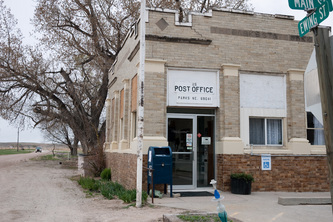
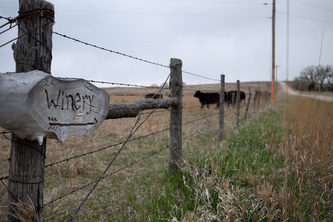
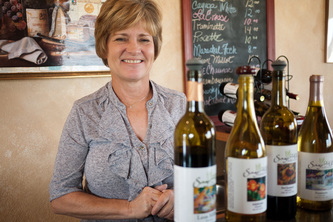

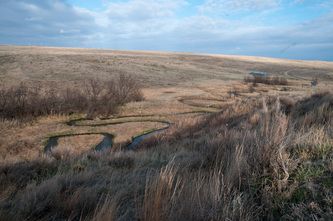
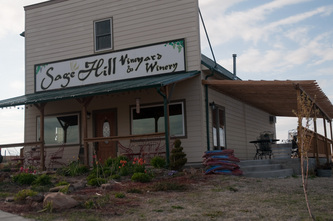
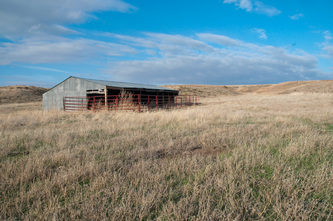
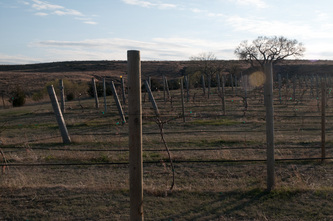

 RSS Feed
RSS Feed

